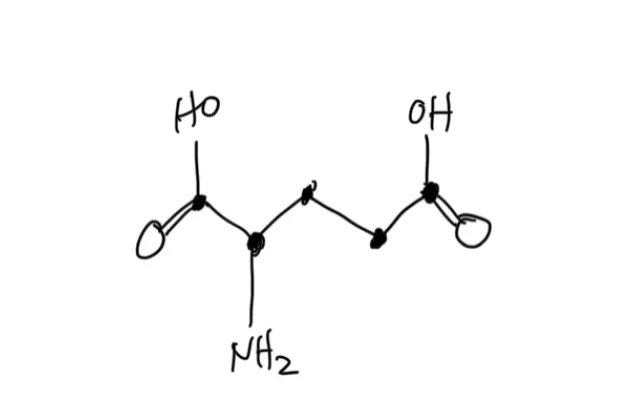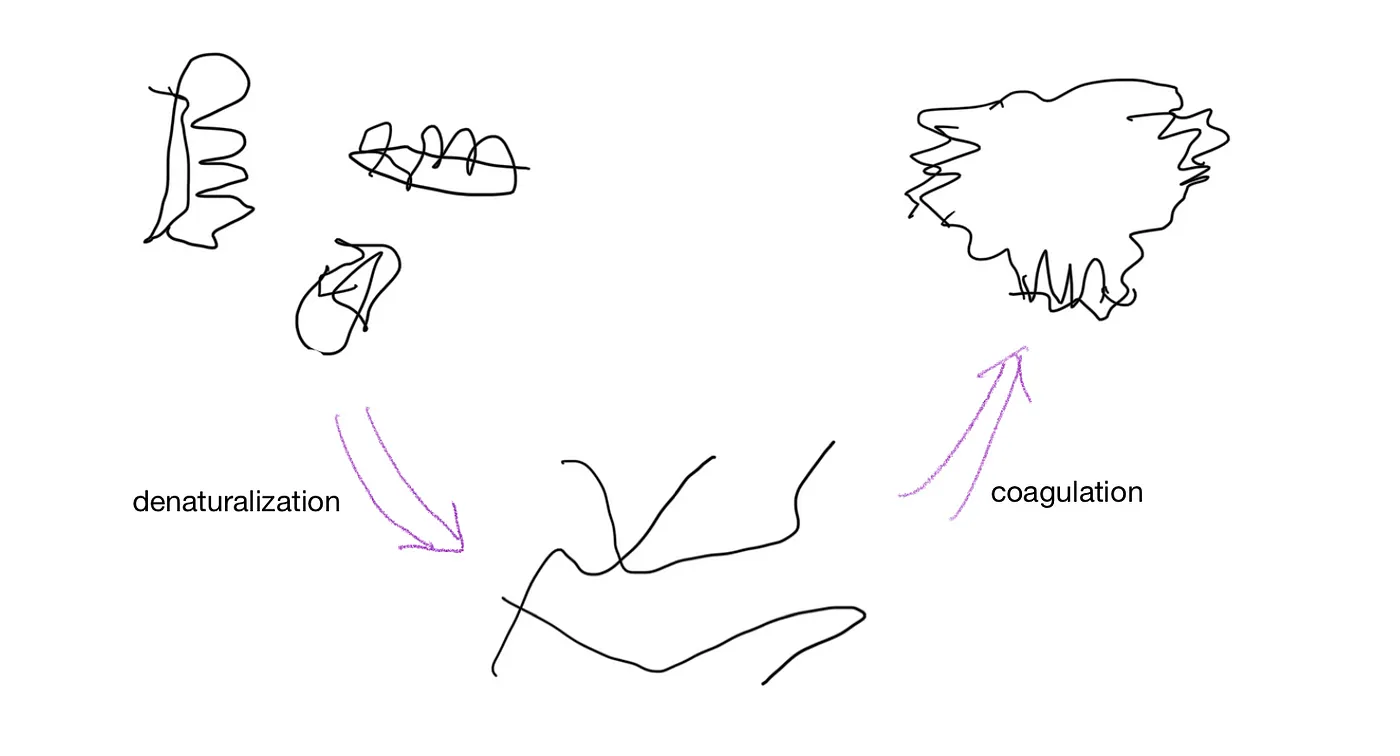Protein
Chemically, proteins are polymers (large molecules consisting of similar units bonding together) of amino acids. Each amino acid has an amino (NH₂) group. They bond into a long chain to form proteins. Figure 5 shows one of the 20 amino acids that make up proteins: glutamic acid. The sodium salt of glutamic acid is known as MSG (monosodium glutamate).

Glutamic Acid
As is obvious from the formula of amino acids, they have many polar O-H and N-H bonds. Different amino acids grouped among the protein chain thus form bonds among themselves, which causes proteins to fold into a delicate structure. When protein molecules are heated, these bonds are broken. The long chains unfold, exposing their reactive side groups. This is the process of protein denaturation. Now one part of one protein molecule might bump into another part of another protein molecule and form a new bond. Protein coagulation is the process where denatured proteins begin to bond with each other and form a gelatinous mass.

Protein Denaturation and Coagulation
Muscle fibers are largely made of protein cells. The fickleness of protein under heat is why meat is more challenging to cook well than vegetables and grains. Let’s look at what happens to a piece of beef when the temperature rises.
At 50⁰C, the myosin proteins begin to denature and subsequently coagulate. Myosin is the protein that is responsible for muscle contraction in live animals. Lumps that scatter light are formed in muscle cells, and meat starts to appear opaquely white. At 60⁰C, the protein collagen, which forms the sheath outside muscle fibers, begins to shrink and squeeze the muscle fibers. The water in the space between protein molecules is squeezed out, and the meat suddenly loses a lot of juice. Around the same temperature, the meat color changes from red to tan, when the iron atom in the red myoglobin (another protein in muscle cells) loses an electron. The result is the tan-colored hemichrome. For a tender cut like the ribeye, this is about the highest temperature you want it to reach.
But for tough cuts with a lot of connective tissues like brisket and oxtail, you need to melt the collagen to get the “falling off the bone” tenderness. Collagen starts to dissolve into gelatin around 70⁰C. However, this process doesn’t happen instantly. Even when collagen is at the right temperature, it takes time for it to melt. That’s why good barbecue takes a long time. When all the collagen melts away, not only are meat fibers not bound together anymore, but the liquid gelatin also makes the meat appear moist and succulent.
In general, the best temperature to cook meat is related to the body temperature of the live animal. Cows have a body temperature of around 38⁰C, so the ideal temperature to cook beef is about 20⁰C higher than that. Chicken’s body temperature is around 42⁰C, so it should be cooked to a higher temperature than beef. Many recipes say the chicken is done when the juice runs clear. The juice of raw chicken is pink/red due to the color of myoglobin. As temperature rises, myoglobin, like all proteins, denatures and changes its color. Exactly at what temperature this color changes and what color it changes to depend on several other factors. So the color of the juice is not an accurate gauge. The best way to check the temperature of your roast chicken is with a thermometer.
Fish are cold-blooded. They should be cooked at lower temperatures. Personally, I prefer fish cooked to an internal temperature of around 50⁰C, or even lower. However, undercooked fish does represent a food safety risk, depending on how much you trust your fishmonger. For the record, meat should be cooked at 60⁰C for 12 minutes to kill all parasites, per the FDA food code. Food safety is a complicated topic that cannot be reduced to a couple of numbers. The quests for safety and the perfect texture are sometimes incompatible goals. The correct condition to kill bacteria is the combined result of temperature and time. The bad news is that high temperature alone is not enough to kill bacteria. The good news is low temperature can be somewhat compensated by longer cook time, so you don't have to overcook everything to be safe.
Eggs are another important source of protein. Egg yolks turn solid at around 65⁰C, but a common misconception is that egg whites solidify at a lower temperature. If you cook an egg in a 65⁰C water bath, you will see the egg white is still watery while the egg yolk has solidified. That’s why the Japanese onsen-tamago (温泉蛋) is the way it is. We will talk more about the science of cooking a perfect soft-boiled egg later.